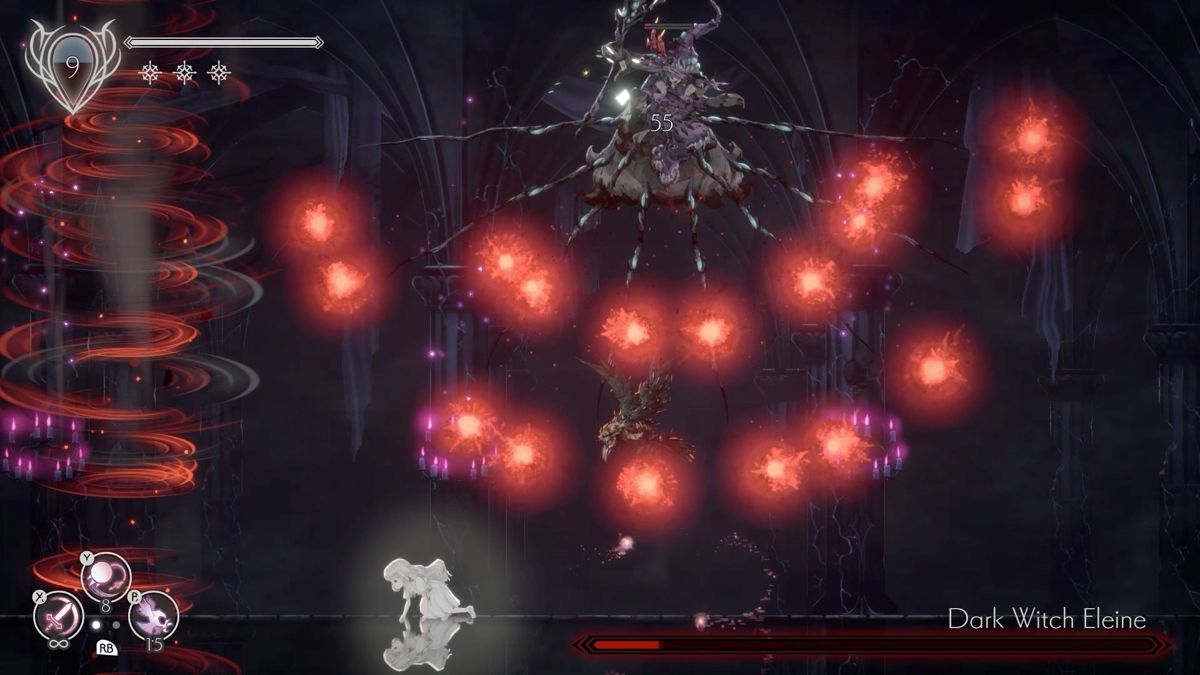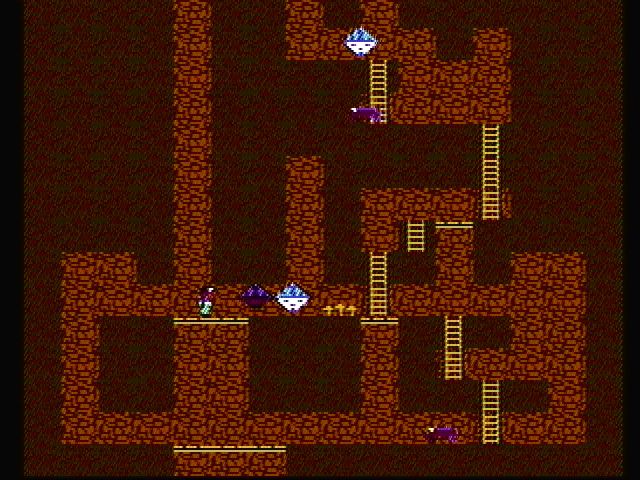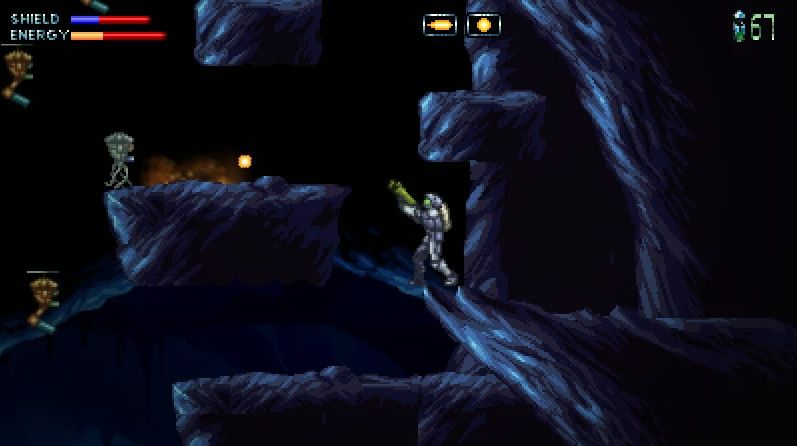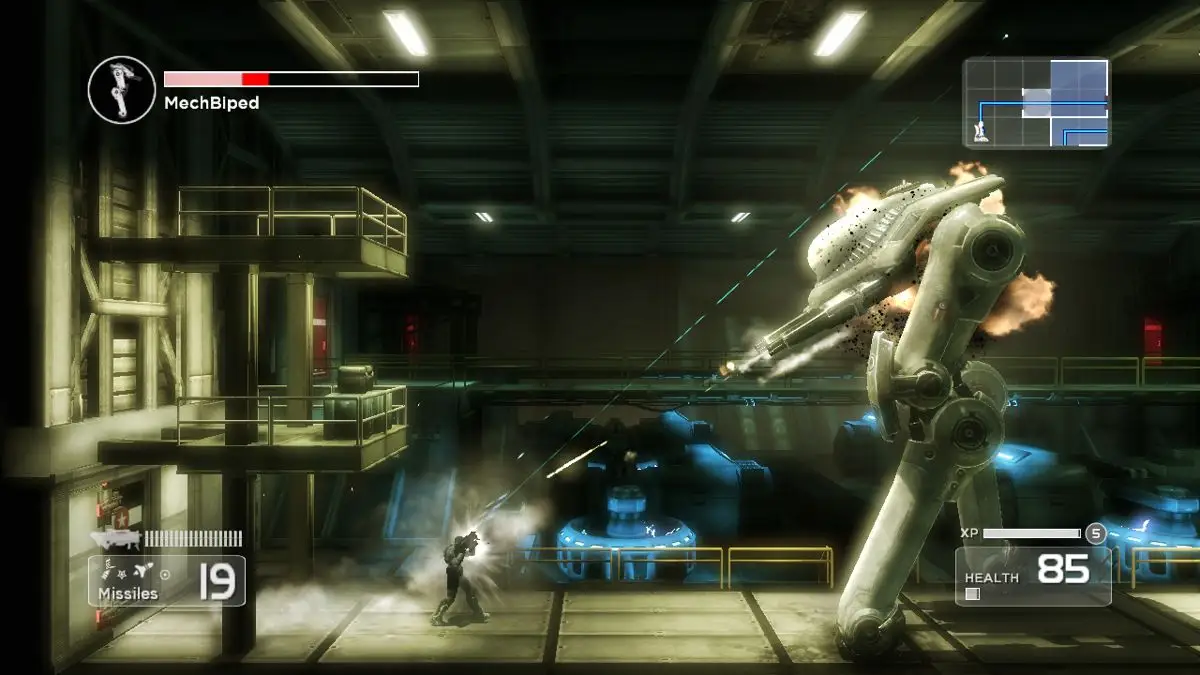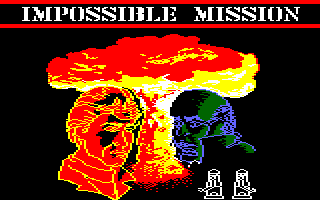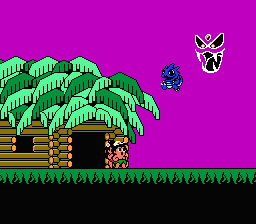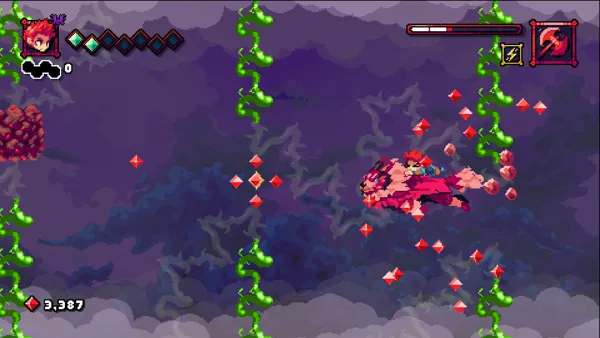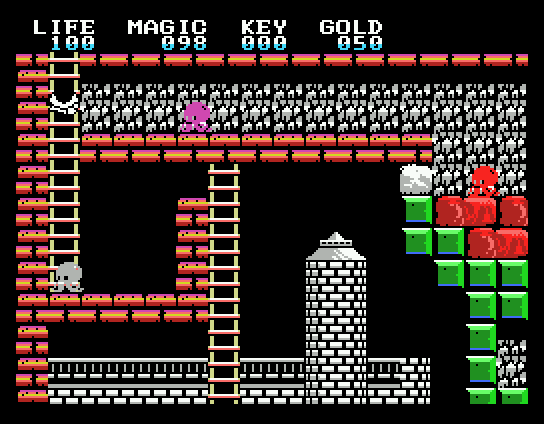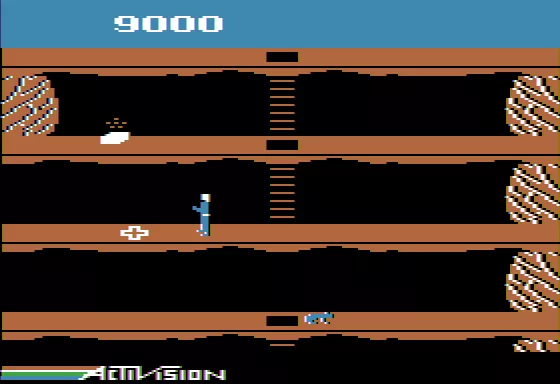Results
ENDER LILIES: Quietus of the Knights
fantasy, challenging, hidden areas
Ender Lilies: Quietus of the Knights is a 2D action-platformer Metroidvania game developed by Live Wire and published by Binary Haze Interactive. It was released in 2021 for various platforms including PC, Nintendo Switch, PlayStation 4, PlayStation 5, Xbox One, and Xbox Series X/S. Given your familiarity with the genre, you'll recognize many of the core Metroidvania elements: 1. Non-linear exploration of an interconnected world map 2. Ability-gated progression 3. Challenging boss encounters What sets Ender Lilies apart is its unique narrative and combat system: - You play as Lily, a young girl who awakens in a ruined kingdom plagued by a mysterious curse called the Blight. - Instead of directly fighting, Lily summons the spirits of purified knights to battle for her. - As you defeat bosses, you gain new spirits with different abilities, expanding your combat options and exploration capabilities. The game features: - A melancholic, dark fantasy atmosphere with beautiful hand-drawn art - A somber, piano-driven soundtrack that complements the game's tone - RPG elements including leveling up spirits and equipping relics for stat boosts - Multiple endings based on player choices and exploration Ender Lilies has been praised for its polished gameplay, atmospheric world-building, and emotional storytelling, making it a standout entry in the Metroidvania genre.
Action 52
challenging
Action 52 (1991) for the Nintendo Entertainment System is notorious for being one of the worst and most infamous video games ever produced. Despite being advertised as containing 52 unique games, the reality was far from that. Many of these "games" were merely slight variations or rehashes of the samelkj basic concepts, with minimal effort put into their design and implementations. The game's development was plagued by numerous issues, including a harried production schedule, limited resources, and questionable management decisions. As a result, the quality of the games was severely compromised, with many of them being unplayable, glitchy, or simply lacking in any meaningful gameplay. One of the most notable aspects of Action 52 was its blatant theft of assets and concepts from other popular games. Many of the games were clear ripoffs of titles like Contra, Marble Madness, and even the classic Tetris. This lack of originality and disregard for intellectual property rights further tarnished the game's reputation. Despite its infamy, Action 52 has gained a cult following among gaming enthusiasts and collectors, who appreciate its notoriety and the sheer audacity of its existence. Some have even attempted to uncover the behind-the-scenes stories and motivations that led to its creation, making it a fascinating case study in the history of video game development gone wrong.
Life on Mars Remake
sci-fi, environmental puzzles, post-apocalyptic
Life on Mars Remake (2017) is a meticulously crafted reimagining of the iconic survival horror game, Life on Mars, originally released in 1998. While retaining the core narrative and atmospheric elements that made the original a cult classic, this remake boasts significant enhancements in terms of visuals, gameplay mechanics, and overall production values. Developed by a team of passionate fans and industry veterans, the game features painstakingly recreated environments with stunning high-resolution textures, advanced lighting techniques, and meticulous attention to detail. The remake seamlessly blends modern graphical fidelity with the oppressive, claustrophobic ambiance that defined the original's haunting atmosphere. Gameplay-wise, the developers have carefully balanced preserving the challenging and unforgiving nature of the original with quality-of-life improvements. The controls have been modernized, offering a more intuitive and responsive experience without compromising the game's tense and unnerving pacing. Additionally, the inventory management system has been streamlined, allowing players to navigate and access their resources more efficiently during intense encounters. One of the most notable enhancements is the implementation of dynamic AI behavior for the game's antagonists. The remake's enemies exhibit heightened situational awareness and unpredictable patterns, ensuring that no encounter feels repetitive or predictable. This added layer of complexity contributes to an ever-present sense of dread and vulnerability, amplifying the overall horror experience. Furthermore, the developers have expanded upon the original game's lore and environmental storytelling, offering deeper insights into the haunting events that unfolded on the ill-fated Martian colony. Hidden documents, audio logs, and meticulously crafted environmental details provide tantalizing glimpses into the backstories of the game's characters and the horrifying circumstances that led to their downfall. While remaining faithful to the core essence of the original, Life on Mars Remake (2017) represents a labor of love, meticulously crafted to introduce a new generation of players to the haunting world of Life on Mars while simultaneously offering seasoned veterans a fresh and immersive reimagining of a beloved classic.
Shadow Complex
environmental puzzles, hidden areas, nonlinear
Shadow Complex is a critically acclaimed 2D action-adventure game developed by Chair Entertainment and published by Epic Games in 2009. Initially released as part of the Xbox Live Arcade lineup, it later made its way to other platforms like PlayStation 3, PC, and mobile devices. While the game's visuals and gameplay mechanics are inspired by classic side-scrollers like Contra and Metroid, Shadow Complex stands out for its impressive scope, depth, and narrative elements. The game takes place in a massive underground complex filled with interconnected rooms, secret passages, and intricate level designs that encourage exploration and backtracking. One of the game's notable features is its emphasis on non-linear progression. Players have the freedom to choose their path through the complex, uncovering new areas, power-ups, and weapons as they progress. The game's map system is intricate and encourages players to revisit previously inaccessible areas as they acquire new abilities, adding depth to the exploration aspect. The combat in Shadow Complex is satisfying and diverse, with a variety of weapons and enemies that require tactical approaches. Players can engage in both ranged and melee combat, with the latter being particularly visceral and rewarding. The game also features a cover system that adds an additional layer of strategy to firefights. Despite its retro-inspired visuals, Shadow Complex boasts impressive graphics and animations for its time, with detailed environments and smooth character movements. The game's art style perfectly captures the spy-thriller vibe, complementing the game's narrative premise. Speaking of the narrative, Shadow Complex presents a compelling storyline that unfolds gradually as players progress through the complex. The plot revolves around a conspiracy involving a domestic militia group and a secret government organization, offering an engaging blend of action and intrigue. Overall, Shadow Complex is a standout title that pays homage to classic side-scrollers while introducing modern gameplay mechanics, impressive production values, and an engaging narrative. Its blend of exploration, combat, and storytelling make it a must-play for fans of the action-adventure genre.
Impossible Mission
environmental puzzles, sci-fi, challenging
Impossible Mission, released in 1984 for various home computer platforms, was a groundbreaking game that combined elements of platforming, puzzle-solving, and stealth gameplay. Developed by Dennis Casswell and published by Epyx, it stood out for its innovative blend of genres and its distinctive visual style. The game's premise revolved around a secret agent tasked with infiltrating a highly secure underground complex to prevent a renegade artificial intelligence from launching a series of nuclear missiles. The player had to navigate through a maze-like series of rooms, each with its own unique challenges and obstacles. Puzzle elements played a significant role in Impossible Mission, as players had to solve various logic puzzles and manipulate objects to progress through the levels. This included tasks such as rearranging tiles, navigating mazes, and deciphering codes. The game has a notable randomization element, though it lacks ability gating, one of the staples of a metroidvania game. Stealth mechanics were also a crucial aspect of the gameplay. Players had to avoid patrolling robots and security systems, often by carefully timing their movements or using distractions. Getting caught or making too much noise would trigger alarms and potentially lead to a game over. The game's difficulty level was notoriously high, with intricate puzzles and unforgiving gameplay mechanics that challenged even experienced players. The limited time limit and the necessity to conserve resources added to the tension and strategic depth. Despite its age, Impossible Mission is still regarded as a classic in the annals of gaming history, praised for its innovative design, challenging gameplay, and unique visual style. Its influence can be seen in many modern games that blend multiple genres and incorporate puzzle-solving elements.
Adventure Island IV
pixel art, hidden areas, interconnected world
testt
Iconoclasts
environmental puzzles, pixel art, challenging
Iconoclasts is a metroidvania-style action-platformer developed by Joakim Sandberg, a single developer who worked on the game for over seven years. While it follows many of the genre conventions, such as nonlinear level design and ability-gated progression, Iconoclasts stands out for its compelling narrative and world-building. The game takes place in a dystopian steampunk world where religious zealots rule with an iron fist, oppressing anyone who dares to question their dogma or tinker with technology. You play as Robin, a skilled mechanic who becomes embroiled in a rebellion against the tyrannical regime. The story tackles mature themes of religion, morality, and the consequences of blind obedience, exploring them with nuance and depth rarely seen in the genre. Iconoclasts' pixel art aesthetic is stunning, with intricate details and animations that bring the world to life. The character designs are particularly noteworthy, with each NPC displaying distinct personalities through their appearances and mannerisms. The game's soundtrack, composed by Joakim Sandberg himself, is equally impressive, featuring a diverse array of tracks that complement the various environments and moods. Combat in Iconoclasts is a highlight, with Robin's wrench serving as a versatile weapon that can be charged and fired in various directions. Additionally, she can upgrade her arsenal with unique weapons and tools, encouraging experimentation and strategy. Boss battles are epic affairs, often requiring players to carefully study attack patterns and exploit environmental hazards. While Iconoclasts excels in many areas, it does have a few notable drawbacks. The game's difficulty can be unforgiving at times, with some bosses and platforming sections feeling overly punishing. Additionally, the backtracking required to progress can become tedious, especially in later stages. Overall, Iconoclasts is a remarkable achievement, showcasing the talent and dedication of its solo developer. Its thought-provoking narrative, stunning visuals, and tight gameplay make it a standout entry in the metroidvania genre, and a must-play for fans of the style.
Flynn: Son of Crimson
fantasy, pixel art, challenging
Flynn: Son of Crimson is a 2D action-platformer developed by Studio Thunderhorse and published by Humble Games in 2021. The game features a unique art style that blends pixel art with more detailed, hand-drawn elements, creating a visually striking world. Key features of the game include: 1. Weapon versatility: Flynn can wield three different weapons - sword, axe, and claws - each with its own combat style and upgrade path. 2. Crimson powers: As the game progresses, Flynn unlocks magical Crimson abilities that enhance both combat and exploration. 3. Companion system: Flynn is accompanied by Dex, a mystical guardian dog who assists in combat and puzzle-solving. 4. Metroidvania-like progression: While not a full Metroidvania, the game features ability-gated areas and encourages backtracking to discover secrets. 5. Diverse environments: The world of Rosantica is divided into distinct biomes, each with unique enemies and challenges. 6. Boss battles: The game features creative boss fights that often require specific strategies or newly acquired abilities to overcome. 7. Time trial mode: After completing the main story, players can challenge themselves with speed-running through individual levels. 8. Lore-rich world: The game's story and setting are more developed than many in the genre, with a focus on the history of Rosantica and the Crimson order. Flynn: Son of Crimson stands out for its polished gameplay, attention to detail in level design, and the satisfying progression of Flynn's abilities throughout the adventure. While it doesn't revolutionize the genre, it offers a well-crafted experience that balances classic platforming elements with modern game design sensibilities.
Legacy of the Wizard
fantasy, environmental puzzles, hidden areas
Legacy of the Wizard, released in 1987 for the Nintendo Entertainment System, is a unique blend of action and puzzle-solving elements, set in a fantasy world. Developed by Sculptured Software and published by Broderbund, the game stood out with its innovative gameplay mechanics and challenging level design. One of the game's standout features was its emphasis on exploration and environmental manipulation. Players assumed the role of a wizard, tasked with navigating intricate dungeons and solving puzzles to progress. Unlike many contemporaneous action games, Legacy of the Wizard required a thoughtful approach, as simply hacking and slashing wouldn't suffice. The game's puzzles were cleverly integrated into the environment, often requiring players to manipulate objects, trigger switches, or use specific spells to overcome obstacles. This added an extra layer of depth and complexity, as players had to carefully observe their surroundings and think critically to proceed. Another noteworthy aspect of Legacy of the Wizard was its innovative spell system. Players could learn and cast various spells, each with unique abilities and applications. These spells not only served as weapons against enemies but also as tools for solving puzzles, adding a strategic element to the gameplay. The game's level design was meticulously crafted, with each dungeon presenting a fresh challenge and requiring players to adapt their strategies. Secret passages, hidden rooms, and unexpected traps kept players on their toes, encouraging exploration and rewarding observant players. Legacy of the Wizard's graphics were impressive for their time, with detailed environments and character sprites that brought the fantasy world to life. The game's soundtrack, composed by David Warhol, was equally noteworthy, creating an immersive and atmospheric experience. While not a commercial success upon its initial release, Legacy of the Wizard gained a cult following among NES enthusiasts and gamers who appreciated its unique gameplay mechanics and challenging puzzles. It remains a beloved classic and a testament to the creativity and innovation that defined the golden era of NES gaming.
Pitfall II: Lost Cavern
fantasy, challenging, hidden areas
Pitfall II: Lost Caverns, released in 1984 for the Atari 2600, is a sequel to the classic Pitfall! game. Unlike its predecessor's side-scrolling platformer gameplay, Lost Caverns introduced a new isometric perspective and a more open-ended exploration-based approach. The game features a larger, non-linear world divided into 24 interconnected caverns, each with its own challenges, hazards, and treasures to uncover. Players navigate through these caverns, searching for valuable artifacts and tools while avoiding or overcoming obstacles such as quicksand pits, scorpions, bats, and treacherous underground rivers. One of the game's standout features is its inventory system, which allows players to collect and utilize various items like lamps, shovels, and keys to access new areas or solve puzzles. The game also introduced a scoring system based on collecting treasures and artifacts, encouraging thorough exploration. Pitfall II's isometric perspective and open-ended design were innovative for its time, offering a more immersive and non-linear experience compared to its predecessor. The game's challenging gameplay, combined with its expansive world and sense of discovery, made it a beloved classic among Atari 2600 enthusiasts.
Filters
Search Term
Properties
Platforms
Tags (include)
Tags (exclude)
Get Your Game Noticed
Advertise your game with MetroidvaniaDB and reach a community of people who know exactly what they're looking for:
Your game.
Native & Banner Ad Spots
Multi-week Discounts
Game Launch Packages
Discounts for Indie Developers

